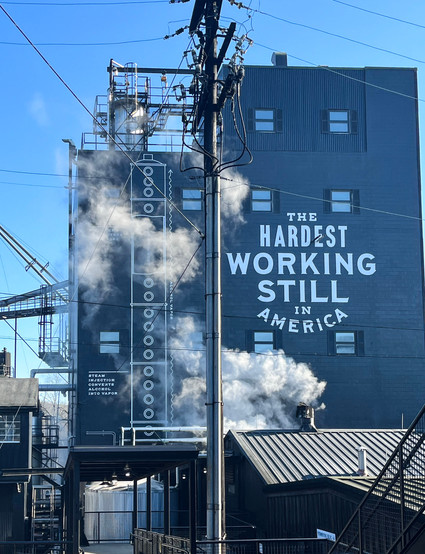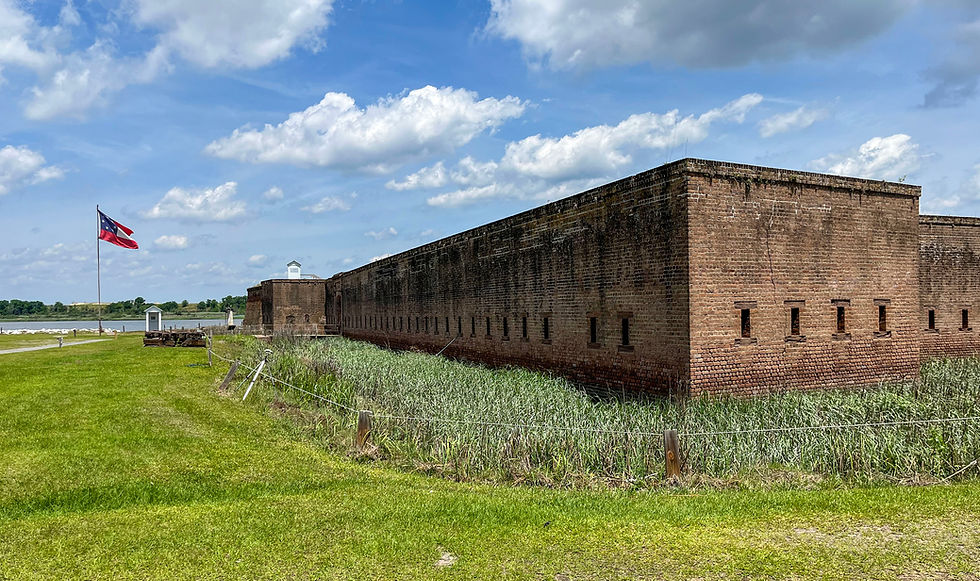The Jim Beam Distillery
- Tim Murphy

- Oct 1, 2023
- 5 min read
From humble beginnings as a family still in the Kentucky bluegrass, Jim Beam has evolved into the world’s best-selling bourbon—the product of an ancestral craftsmanship spanning seven storied generations. Jim Beam’s contemporary adoration may be understood through its history, one that encapsulates ambition, ingenuity, and perseverance.
Johannes “Jacob” Boehm (later Anglicized to “Beam”) was born in Berks County, Pennsylvania, on February 9, 1760. When Jacob’s father, Nicholas, died suddenly in 1766, his widow, Margaretha, relocated her five children to Frederick, Maryland, where they found residence at her family’s plantation. During his teenage years, Beam was apprenticed by his uncle, Jacob Myers, in the commercial enterprises of wine fermentation and whiskey distillation.
In 1785, the federal government awarded Jost Myers—the family patriarch and distinguished Revolutionary War veteran—a 1,500-acre bounty-land grant in the District of Kentucky for his military service. Jost died two years later, leaving the frontier parcel to his successors. Jacob Beam—who married Mary Myers (i.e. his first cousin) the year preceding Jost’s death—moved his growing family to the burgeoning territory in 1788. In June 1792, following Kentucky’s admission to the Union, Jacob gained title to one hundred acres of his late uncle’s estate.

Like many early Kentuckians, the Beams sought agrarian pursuits, utilizing the region’s fertile soil to cultivate corn. A versatile and resilient crop, corn was a valuable trading commodity and staple grain in Early American diets. While most harvests were milled into flour or meal, surplus grains were preserved as liquor. Jacob Beam—applying the artisanal skills learned during his Maryland mentorship—established a distillery and sold his first barrel of corn whiskey, “Old Jake Beam Sour Mash,” in 1795. This inaugural batch bolstered Beam’s reputation, showcased his expertise, and laid the groundwork for a multigenerational bourbon dynasty.
In 1820, Jacob’s son, David, took over the family business. He expanded production—replacing the old pot stills with column varieties for continuous operation—and named the company “Old Tub Distillery.” During the 1830s and 1840s, David harnessed the power of evolving transportation technologies, such as steamboats and railroads, to distribute his whiskey to consumers across the United States. When David passed away in 1854, his son, David M. Beam, inherited Old Tub. He rebranded the distillery “D. M. Beam & Company” and relocated to Nelson County, Kentucky, in 1860.
Colonel James Beauregard “Jim” Beam—the modern brand's namesake—assumed ownership of the distillery in 1894. The business prospered for 25 years under Jim’s savvy leadership and compulsory quality standards; however, on January 17, 1920, Prohibition brought all that success to a crashing halt. With his family legacy criminalized, Beam was forced to pursue other business practices. He attempted to prospect coal and cultivate citrus farms in Florida, but both speculative ventures ultimately failed.

After the Repeal of Prohibition in December 1933, the Colonel and his son, T. Jeremiah “Jere” Beam, purchased the old Murphy Barber Distillery in Clermont, Kentucky, and rebuilt the business as the “James B. Beam Distilling Company.” Three Chicago investors—Harry Blum, Oliver Jacobson, and Harry Homel—provided financial backing in exchange for company ownership. The Beam family continued to oversee day-to-day operations in the new production facility.
Following his father’s retirement in 1946, Jere assumed managerial responsibilities at the distillery and helped transform Jim Beam into an international brand by shipping cases of bourbon to servicemen overseas. In 1967, following the company's acquisition by American Brands (later Fortune Brands), Jere retired from distilling. With no children of his own, Jere bequeathed the business to his nephew, Frederick Booker Noe II—Jim Beam’s Master Distiller in Boston, Kentucky.
In 1978, Booker began experimenting with cask-strength bourbons—“unfiltered, uncut, and straight from the barrel.” He bottled his most enjoyable recipes and pioneered the small-batch bourbon market with the release of “Booker’s Bourbon” in 1987. Since then, several other labels have joined the Jim Beam Small Batch Collection, including Basil Hayden, Baker’s, and Knob Creek.
When Fortune Brands divested in 2011, the former holding company’s liquor division was renamed Beam, Inc. In January 2014, Suntory Holdings—a Japanese alcoholic beverage guild—purchased Beam, Inc. for $16 billion and renamed the subsidiary “Beam Suntory,” which currently controls interest the Jim Beam brand.

THE JIM BEAM DISTILLERY TOUR
Since October 2012, the Jim Beam American Stillhouse has welcomed millions of bourbon-curious visitors into its world-renowned production facility. While Jim Beam offers several tasting and tour options, the most popular selection is the “Bourbon the Beam Way – Distillery Tour and Tasting,” which starts at $28 per person. This guided experience explores over two hundred years of Beam family tradition—from bourbon-making basics to aging and bottling—and concludes with an in-depth sampling of select Jim Beam products.
The Jim Beam Tour begins with an introduction to bourbon. There are specific criteria for a distillate to be considered “America’s Native Spirit,” as stipulated by a 1964 Congressional resolution:
1. Bourbon must be produced in the United States of America
2. The mash bill must contain at least 51% corn
3. Bourbon cannot be distilled higher than 160 proof nor stored greater than 125 proof
4. Bourbon must be aged in new, charred oak barrels for at least two years
5. The final product must be free from additives
Jim Beam begins its distilling process with a carefully calculated mixture of corn, rye, and malted barley. This proprietary blend is combined with ‘Kentucky limestone-filtered water’ in a 10,000-gallon cooker, forming a mash. Some of the material from the previous batch is added for product consistency, which creates a “sour mash.”

Jim Beam’s naturally-sourced water is arguably its most important ingredient. Iron-free and calcium-rich, its chemical composition directly contributes to the bourbon’s flavor and appearance. The water’s mild alkalinity also creates a favorable environment for proteolytic enzyme activation during fermentation.
Once cooked, the mash is transferred to a fermentation tank, where it cools to approximately seventy degrees Fahrenheit. The mixture is then introduced to yeast—the same strand used since 1934—which, over the course of several days, degrades available glucose into carbon dioxide and ethanol. The resulting liquid (called “wash” or “distiller’s beer”) is pumped into a column still and heated to over two hundred degrees. At this temperature, alcohol vapors separate from water and water-soluble particles. This vapor is subsequently condensed into “low wine” (a 125 proof distillate) and pumped through a doubler for a second distillation. The final result is a 160 proof “high wine.”
The resulting high wine is stored in new American White Oak barrels with a Level 4 “alligator” char, which caramelizes the wood sugars and degrades tannin and lignin compounds, giving bourbon its golden-brown hue, vanilla aroma, and oaky undertones. Filled barrels are rolled into rackhouses and aged for at least four years. Once the bourbon reaches maturity, it is bottled correspondingly by label and distributed across the country. While on tour, visitors have the opportunity to dispense their own Knob Creek bourbon straight from the production line.
The tour concludes with a tasting inside Jim Beam’s American Outpost visitor center. Once complete, guests are free to peruse the gift shop, grab a bite at The Kitchen Table Restaurant, or walk around the Baker Beam House (c. 1911) which is listed on the National Register of Historic Places.
As “America’s First Family of Bourbon,” the Beams are synonymous with the steadfast gumption and innovative craftsmanship that defines this country’s liquid heritage. Their generational expertise has undoubtedly influenced the resurgent appreciation for Kentucky bourbon, making Jim Beam a household name of international proportions.
Visit Jim Beam and Beam Distilling to learn more about the company and its tour offerings
Check out Whiskey University, Mashed, The Chuck Cowdery Blog, and F. Paul Pacult's American Still Life: The Jim Beam Story and the Making of the World's #1 Bourbon for more Beam family history
Read the Bourbon Obsessed review of Jim Beam's Distillery Tour




















